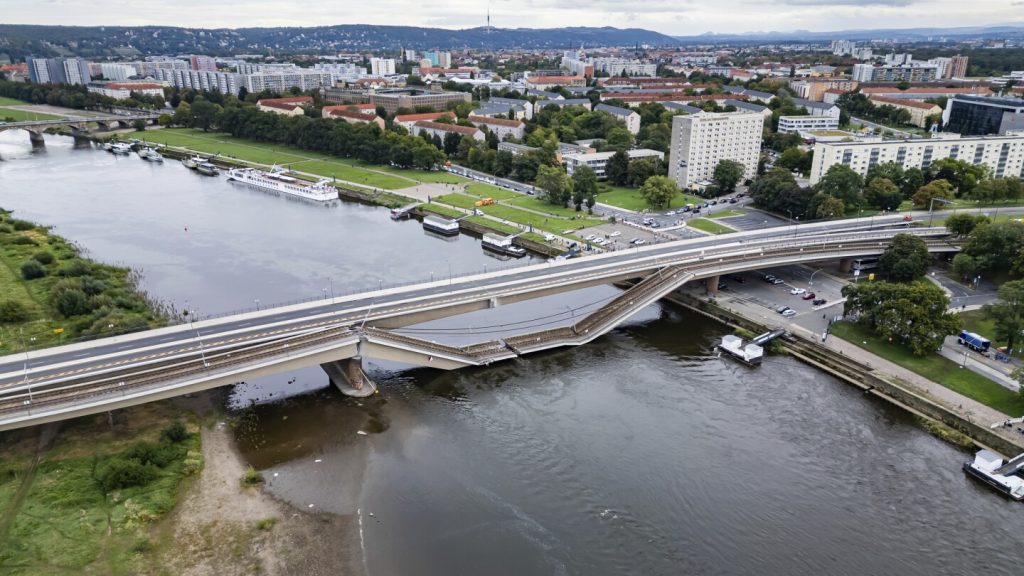Local officials are working to determine the cause of a concrete bridge collapse in Dresden, Germany, which occurred early Wednesday morning. The incident disrupted a major traffic artery in the city and impacted the heating system, leading to a complete stoppage of hot water supply. The collapse of a section of the Carola Bridge into the Elbe River is being treated as an accident, with no indications of foul play. The bridge, dating back to East Germany’s communist era, may have been affected by chlorine corrosion, contributing to its collapse. The emergency closure of the bridge has caused travel disruptions for the city’s tram system, motorists, pedestrians, cyclists, and boat traffic.
The Dresden fire department responded to the incident after being alerted shortly after 3 a.m., expressing concerns that more sections of the bridge could collapse in the coming hours. The closure of the entire bridge is impacting various modes of transportation and causing logistical challenges for cargo ships and tourism sightseeing vessels. The collapse occurred just 18 minutes after the last tram crossed the span, with the damaged section scheduled for renovation next year. Other parts of the bridge had reopened in March after months of construction, indicating a recent attempt at maintenance and repair.
In addition to the impact on transportation, the collapse has also damaged pipes that are part of the city’s heating system, leading to a complete halt in hot water supply across Dresden. Fire department spokesman Michael Klahre highlighted the issue of the bursting of district heating pipes, which has affected the entire federal state capital. The situation has added to the challenges faced by residents and businesses in the city, especially during the colder months, as they grapple with the loss of essential services. Dresden, located about 160 kilometers south of Berlin, is known for its Baroque architecture and historical significance.
The investigation into the bridge collapse is ongoing, with authorities focusing on understanding the underlying factors that led to the incident. The potential role of chlorine corrosion from the bridge’s communist-era construction is being considered, along with other possible causes. Officials are working to assess the structural integrity of other bridges in the region to prevent similar accidents and ensure public safety. The disruptions caused by the collapse highlight the importance of infrastructure maintenance and the need for regular inspections to detect and address potential issues before they escalate. The incident serves as a reminder of the critical role that bridges play in facilitating transportation and connecting communities, underscoring the need for proactive measures to protect these vital structures.


